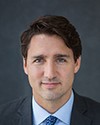Thank you, Mr. Chair.
It's great to be a vacationer on this committee, sitting in as a substitute.
Before I get to my question, I was just interested in the comments from across the way, about being worried about the implementation. I think the credibility actually comes from...and my colleague had just talked about it.
I know they may have a little trouble understanding how things actually get done within a timeframe, but within 18 months we've actually got an implementation. We've got a sustainability report here. What drives it is, again, unique; I think right now it's obviously the transparency that will come.
When I read through this and tried to understand the 32 separate silos, anyone who has business sense would know you can never deal with that. It takes a management system. It takes coordination within a department and with a department to come up with a consensus and an approach that can actually be discussed and to then have a report come forward. It's called a whole-of-government picture. It actually makes the departments and agencies accountable to each other rather than just to themselves--i.e., laying it out there and saying, “You know, this is only our point of view. For the rest, the other 31, you're on your own.” That's not the approach that needs to be taken.
I think congratulations should be given to the ministers who have taken the initiative and taken hold of something that sat around for 13 years or however long the time was. It obviously needed repair. The mechanic has come along and we now have a vehicle that is actually running much better. That's not to say it's perfect. That's not to say it's complete. I think the Canadian people obviously recognize that something drastic had to be done.
We now have a strategic approach, which I think is really important. At the start of it, there's reference to inclusion under the theme of shrinking the environmental footprint. We then talk about actually setting the example through government. We have all the other aspects within our economy and across the country. We talk about how we're going to measure it for the environment.
Beginning with the government, could you tell us about the progress on greening operations? Is there anything you can tell us in terms of some type of status for where we are, since as a government we want to have a leading edge?





